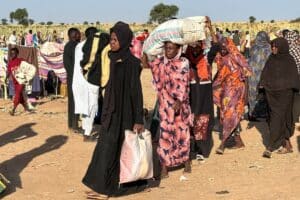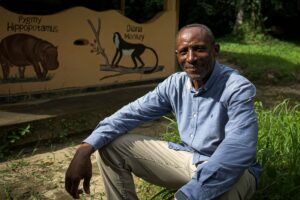Monday, September 09, 2024
Windhoek, Namibia
Namibia has begun the slaughter of over 700 wild animals – including hippos, elephants, buffalo and zebras – in order to feed populations starved by the worst drought in decades, the Ministry of the Environment announced on Tuesday.
Some 160 animals have already been killed under this government measure, announced last week, which will not only provide meat for thousands of people, but also ease the pressure on drought-stricken grazing and water resources.
Professional hunters were commissioned to shoot 30 hippos, 83 elephants, 60 buffalo, 100 blue wildebeest, 300 zebra, 100 eland and 50 impala (two types of antelope). Most of these animals live in the country’s protected national parks.
At least 157 of these 723 animals have already been slaughtered, said Romeo Muyunda, spokesman for the Ministry, without giving any indication of how long the process will take.
The slaughter of the first 157 animals has “provided 56,875 kg of meat”, the ministry said in a statement.
“Our aim is to carry out this operation in a sustainable way while minimizing the trauma as much as possible. We need to separate the animals that need to be hunted from those that don’t,” explained the spokesman.
“Our aim is to carry out this operation in a sustainable way while minimizing the trauma as much as possible. We need to separate the animals that need to be hunted from those that don’t,” explained the spokesman.
In line with the global ban on the ivory trade, the tusks of the slaughtered elephants will be stored in government warehouses.
In May, Namibia declared a state of emergency due to the drought affecting several southern African countries.
– Elections in sight –
The UN’s World Food Program (WFP) reported in August that around 1.4 million Namibians, more than half the population, were experiencing severe food insecurity, with cereal production down 53% and dam water levels down 70% on last year.
The animal rights association Peta published a letter on its website addressed to Prime Minister Saara Kuugongelwa-Amadhila, asking him to “reconsider” this measure, which is “not only cruel, but also dangerously short-sighted and will have no long-term effect”.
In the letter, Peta vice-president Jason Baker warned that the cull could also unbalance ecosystems.
A group of African researchers and conservationists issued a statement arguing that the mass cull sets a precedent allowing governments “to exploit protected wildlife and national parks under the guise of humanitarian needs”.
They question whether an environmental impact study, a game census and food insecurity assessments were carried out before deciding on the cull.
They point out that this comes in the run-up to Namibia’s November general elections, and believe that the meat is intended for distribution in areas where the ruling Swapo party faces strong opposition.
The slaughter is also expected to generate substantial income from hunting licenses granted to hunters, they add, denying that Namibia is overwhelmed by elephants, whose numbers are estimated at around 20,000 in the country.
The World Wildlife Fund (WWF) estimates that there are only around 415,000 elephants left on the continent (compared with 3 to 5 million at the beginning of the 20th century). Elephants in Africa and Asia are considered threatened with extinction, with the exception of the populations of South Africa, Botswana, Namibia and Zimbabwe, which are considered vulnerable.
Humaniterre with AFP





